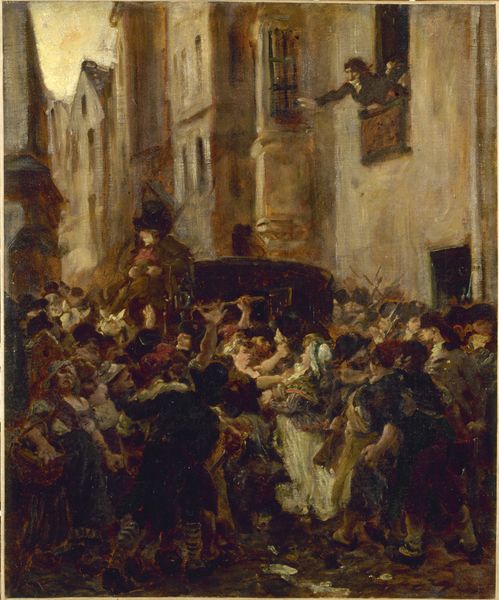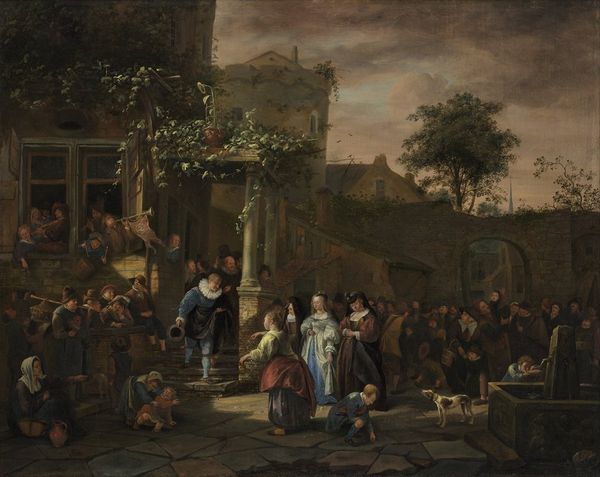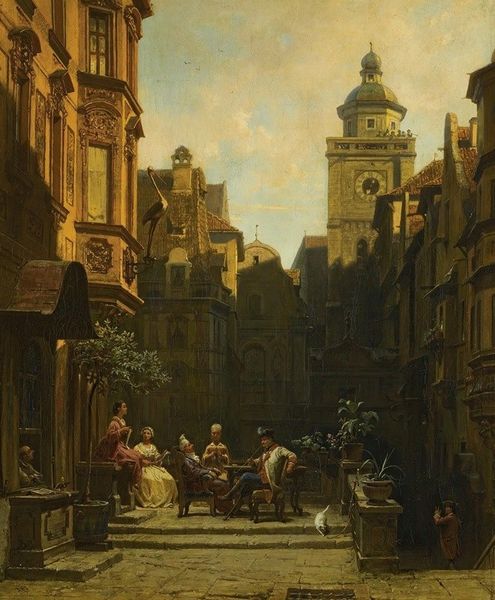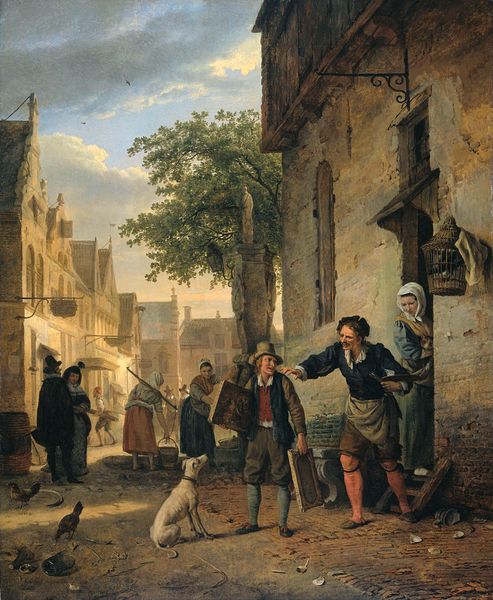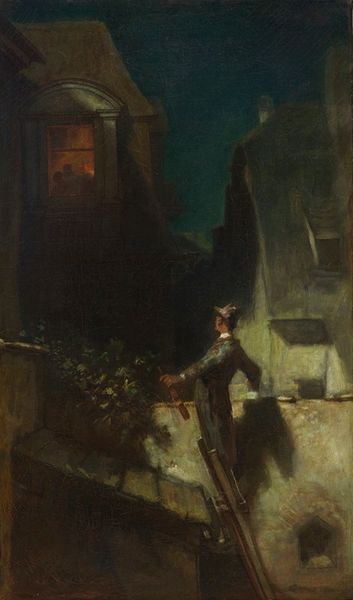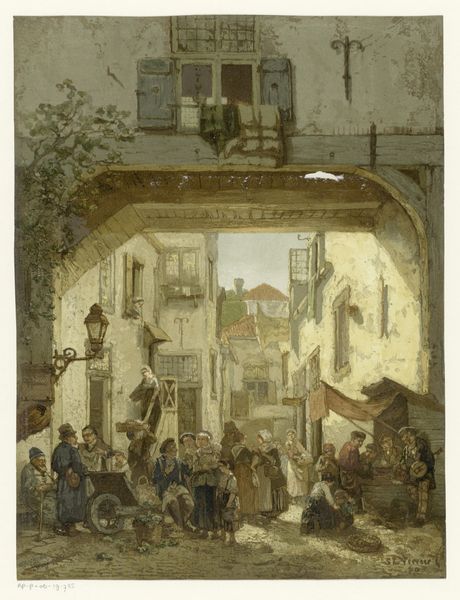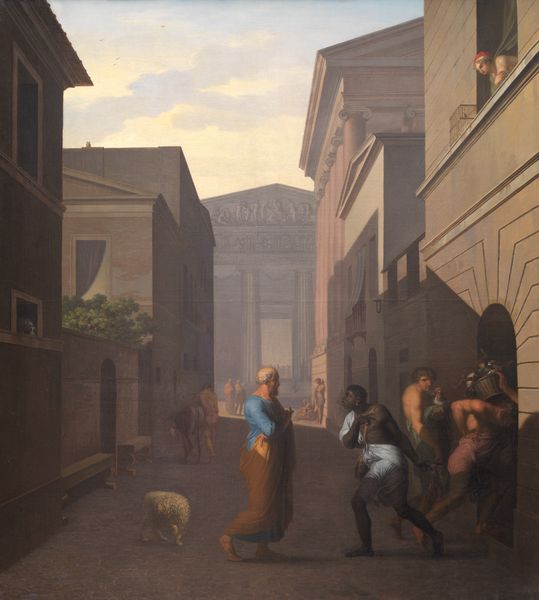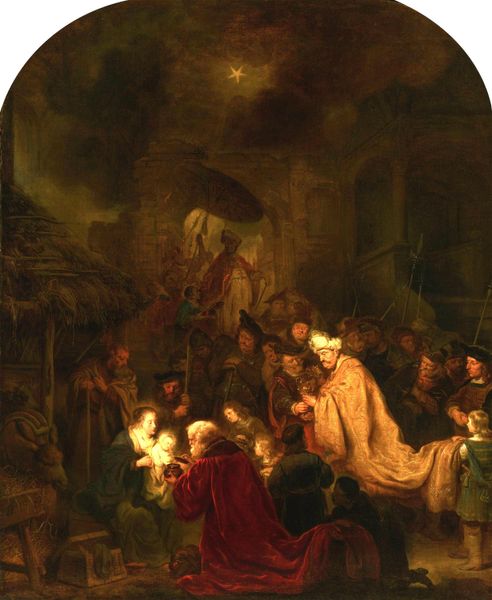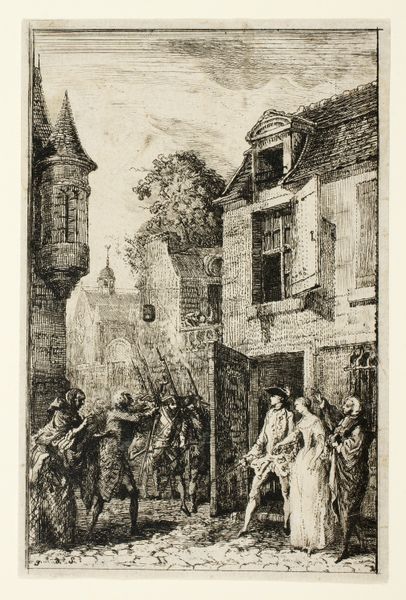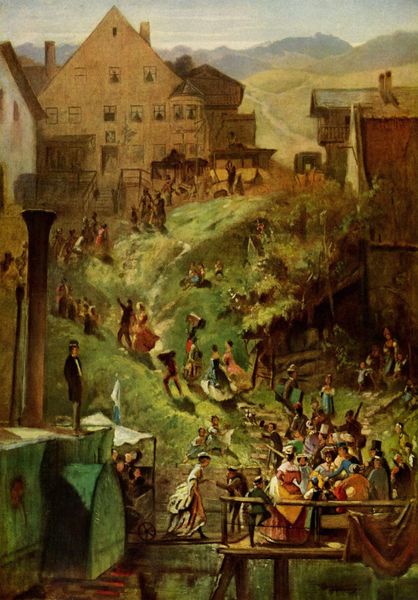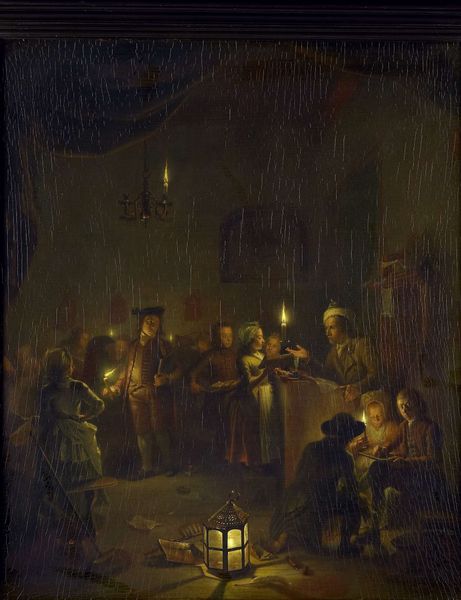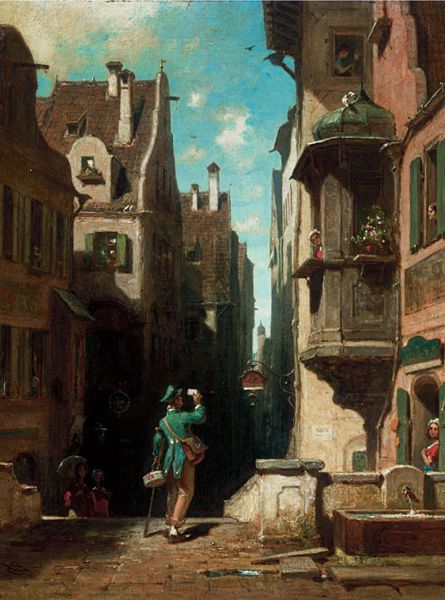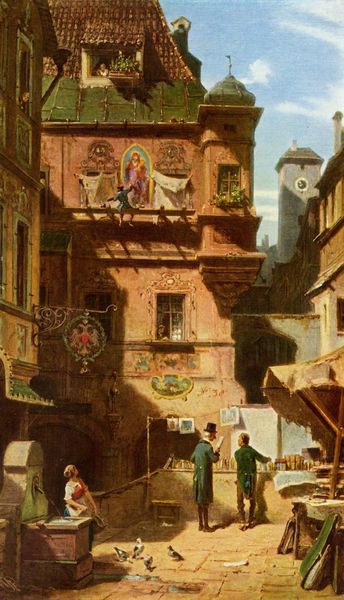
Copyright: Public Domain: Artvee
Curator: This oil painting, possibly from 1856, is called "Spanisches Ständchen," or "Spanish Serenade" by Carl Spitzweg. It depicts a group of musicians performing beneath a balcony. Editor: The initial impression is undeniably romantic, perhaps a little theatrical. The scene is bathed in a very gentle moonlight, creating a dramatic spotlight for the musicians below. Curator: Spitzweg, active during the Biedermeier era, was fascinated with everyday life. He often captured the quirky and picturesque aspects of bourgeois existence, and this piece is no exception. The painting provides us with insight into public displays of affection. Music itself carries so much gendered weight here. Are the roles traditionally associated? Who is present? Who isn't and why not? Editor: I agree, though it seems to be a staged performance. It seems almost performative in how it emphasizes that courtship itself operates as performance. The darkened stage almost removes accountability or responsibility on the part of both groups, as it gives them permission to indulge, perhaps at arm’s length, in flirtation and theatrics. Curator: That’s fascinating. This begs the question, is this courtship about something more? About ownership? Control? Do the people on the balcony possess some form of superiority and/or elitism relative to the band playing for their benefit? It can’t be overlooked that wealth can buy love in some ways. I imagine this was often used to consolidate relationships that may serve greater purposes like preserving family names or gaining wealth and territory, as happened through Medieval European times. Editor: The piece certainly lends itself to these analyses, and the power dynamics, like gender and class, definitely come into play when thinking about the role of patronage, too, given who gets to participate in these forms of social exchange and expression. And I suppose, we see the origins here of some performative romantic dynamics in contemporary society today as well. Curator: Yes, these connections to now are key, and this artwork offers a reminder that art history provides frameworks for critical awareness and a lens to understand our present moment. Editor: Exactly. The scene invites contemplation on so many levels, prompting introspection on modern societal mores and artistic influences in general.
Comments
No comments
Be the first to comment and join the conversation on the ultimate creative platform.
